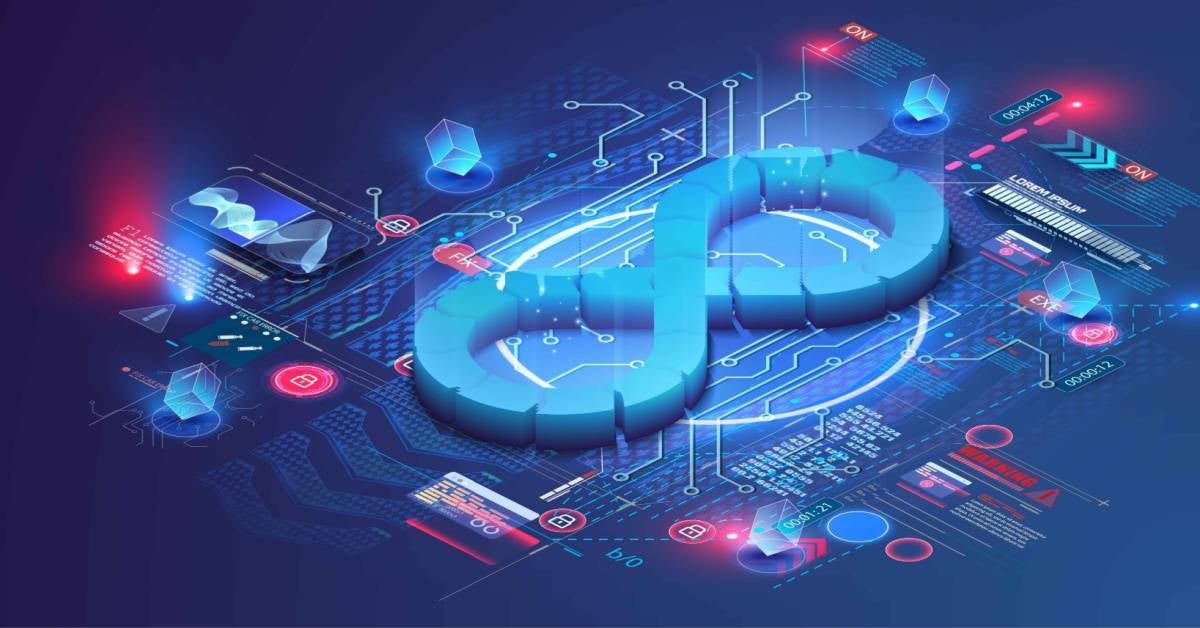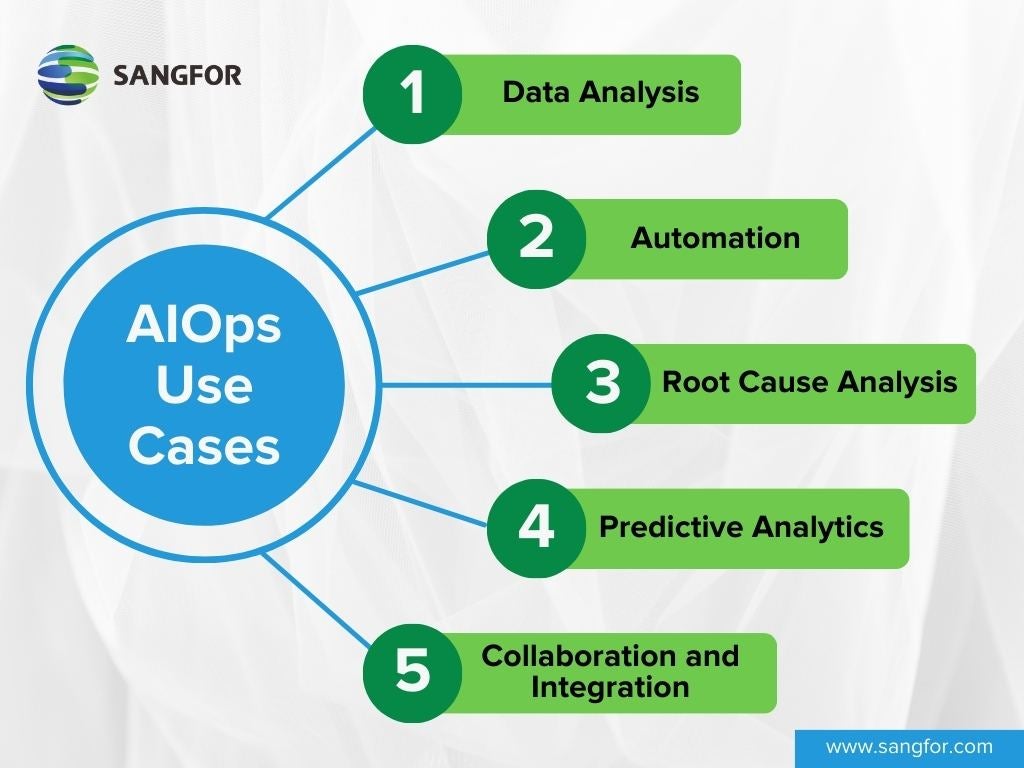What is AIOps?
AIOps, or Artificial Intelligence for IT Operations, is a term coined by Gartner. It is an approach to IT operations that leverages artificial intelligence (AI) capabilities, such as natural language processing and machine learning (ML) techniques, to enhance and automate various aspects of IT operations. These include event correlation, anomaly detection, and root cause analysis. The goal of AIOps is to improve the efficiency, agility, and responsiveness of IT systems. This goal is achieved by integrating big data, advanced data analytics, and intelligent insights to automate and streamline key IT operations functions.
AIOps solutions integrate multiple separate, manual IT operation tools into a single, intelligent, and automated IT operations platform. This enables IT operations teams to respond more quickly, especially in times of crisis like outages.

AIOps Use Cases
Data Analysis
AIOps platforms reduce IT environment management and operational complexities with data collection and analysis abilities. They aggregate and analyze vast amounts of data, such as log files, apps, tickets, and performance metrics from multiple data sources with ease and accuracy. It significantly eliminates IT teams’ excruciating task to analyze large volumes of data and ensures an overview of entire IT systems.
Data correlation and analysis by AIOps platforms set off trigger-based response algorithms. The triggered algorithms then start service routines and respond based on pre-set criteria by the organization’s IT team. This way, they can quickly identify and respond to anomalies that are alerted by the AIOps platform.
Automation
A key alluring capability of AIOps is its automation of IT tasks and systems. Automation by AIOps can include incident resolution, capacity planning, and other operational processes. This reduces the workload for IT operators. Besides, it can also orchestrate and automate real-time testing of new software features and user stories or perform in-depth log analysis and detect errors and anomalies.
Root Cause Analysis
As the term suggests, root cause analysis identifies and resolves underlying causes when a problem arises, intending to prevent the recurrence of issues. AIOps platforms can help IT teams identify these root causes by correlating data and events across different systems and layers of the IT infrastructure in an automated manner. The key aspects of root cause analysis include data aggregation and correlation, anomaly detection, incident identification, data enrichment, topology mapping, and so on.
Root cause analysis by AIOps helps organizations in two ways. First, it saves time for the IT team by eliminating their time-consuming manual effort in treating the symptoms rather than the core problem. Second, root cause analysis accelerates the troubleshooting process and allows for more efficient addressing of issues.
Predictive Analytics
In simpler terms, predictive analytics can be defined as the process of using data to project future potential outcomes. AIOps performs predictive analysis to anticipate and forecast potential future issues, such as performance bottlenecks, resource imbalances, and security vulnerabilities in an organization’s IT environments. This involves gathering all historical data and patterns and analyzing them with advanced analytics, ML models, and algorithms.
Predictive analytics allows IT teams to have better control over their complex environment while being well-prepared to mitigate any issues. They can pre-emptively address potential disruptions, optimize resource allocation, fortify their cyber defenses, and overall provide a seamless user experience with uninterrupted service delivery.
Collaboration and Integration
AIOps facilitates collaboration and communication between different IT teams and tools, in many ways. It makes collaboration easier by providing a centralized platform for sharing information, insights, and analysis. This will ensure uniform and consistent access to all team members, eliminating any misunderstandings.
In addition, it offers a unified view of the entire IT environment, including applications, infrastructure, and services. This better visibility and transparency allow IT teams to profoundly understand the systems and applications, improve decision-making, and respond to issues more quickly. Major communication tools like Slack can also be integrated with AIOps platforms, promoting easy communication and information sharing.

Benefits of AIOps
AIOps offers several benefits for an organization’s IT operations such as:
- Time Saving by Automation: Artificial intelligence for IT Operations saves time for organizations by automating many IT tasks such as error detection, alert analysis, and event reporting. This allows IT operations teams to shift their focus on business innovation, rather than sifting through data and systems to find out the causes of issues.
- Faster Mean Time to Resolution (MTTR): Enterprises generate heaps of data every day, and much of it goes unused because of extreme difficulty in analyzing all the burgeoning data. In addition, most organizations get lost in their data, often losing sight of important and urgent issues. This also leads to missed opportunities for innovation and improvement. On the other hand, AIOps helps cut through the IT noise, correlating data from multiple systems. It swiftly identifies issues and proposes solutions faster with higher accuracy, thereby helping organizations lower their MTTR.
- Proactive Issue Resolution: AIOps enables proactive monitoring and analysis of IT infrastructure and applications. By leveraging machine learning algorithms, it can predict and identify issues before they impact services. This proactive approach helps reduce downtime and enhances overall system reliability.
- Lower Operational Costs: By early detection and proactive resolution of issues, organizations can reduce their operational costs. AIOps platforms help IT teams avoid costly outages, service disruption, and plummeting customer experiences.
- Enhanced Visibility and Insights: AIOps provides a comprehensive overview of the entire IT landscape of an organization. These platforms gather and correlate data from various sources, offering insights into patterns and issues. AIOps sheds light on the health and performance of IT systems while helping them prepare for both unexpected and predictable issues.
- Improved Collaboration: AIOps improves collaboration by providing a centralized platform, enabling easy flow of information, insights, and analysis across various teams. This collaborative approach helps eliminate miscommunication, enabling more effective problem-solving and decision-making.
- Security Enhancement: With accurate and quick detection of anomalies, AIOps platforms can significantly improve the security of an organization. IT teams can identify and respond to security incidents more effectively, avoiding service disruptions and business continuity in case of crises.
- Continuous Improvement: AIOps platforms are designed to learn new things and adapt over time through feedback loops. By analyzing both historical and new data, they can continuously improve IT systems, identify threats and pitfalls ahead of time, and make IT operations more efficient and resilient.
Main Challenges to AIOps
- Data Quality and Availability: Data is everything in AIOps platforms, from analysis to predictions. Therefore, the quality and availability of data are critical for accurate outcomes. If the data inputted is incomplete or inaccurate, organizations can end up victims of incorrect insights, patterns, and predictions.
- Integration Complexity: Every organization’s IT environment is a mix of on-premises and cloud infrastructure, diverse applications, services, and tools, making it highly complex. This complexity may become a hurdle to integrating AIOps with existing IT systems and handling the intricacies of its various architectures.
- Lack of Standardization: There are no standardized practices and data formats in AIOps usability. This may lead to more human interventions and less automation.
- Security, Trust, and Compliance: Despite the benefits, skepticism about security, trust, and compliance persists. Data privacy and regulatory requirements, especially in a geographical sense, can pose challenges in adopting AIOps. Organizations still prefer human-made or human-reviewed decisions over the platforms' decisions.
In Conclusion
AIOps emerges as a transformative approach to IT operations, leveraging advanced technologies like artificial intelligence and machine learning. With its capabilities, including data collection, automation, root cause analysis, and predictive analytics, these platforms offer substantial benefits such as time and cost efficiency, faster resolution, improved collaboration, and so on. While adopting AIOps, organizations must consider the challenges it poses and are required to take steps to overcome them. Despite these challenges, it remains at the forefront of IT innovation, promising organizations improved operational capabilities and resilience in the ever-evolving technological landscape.





